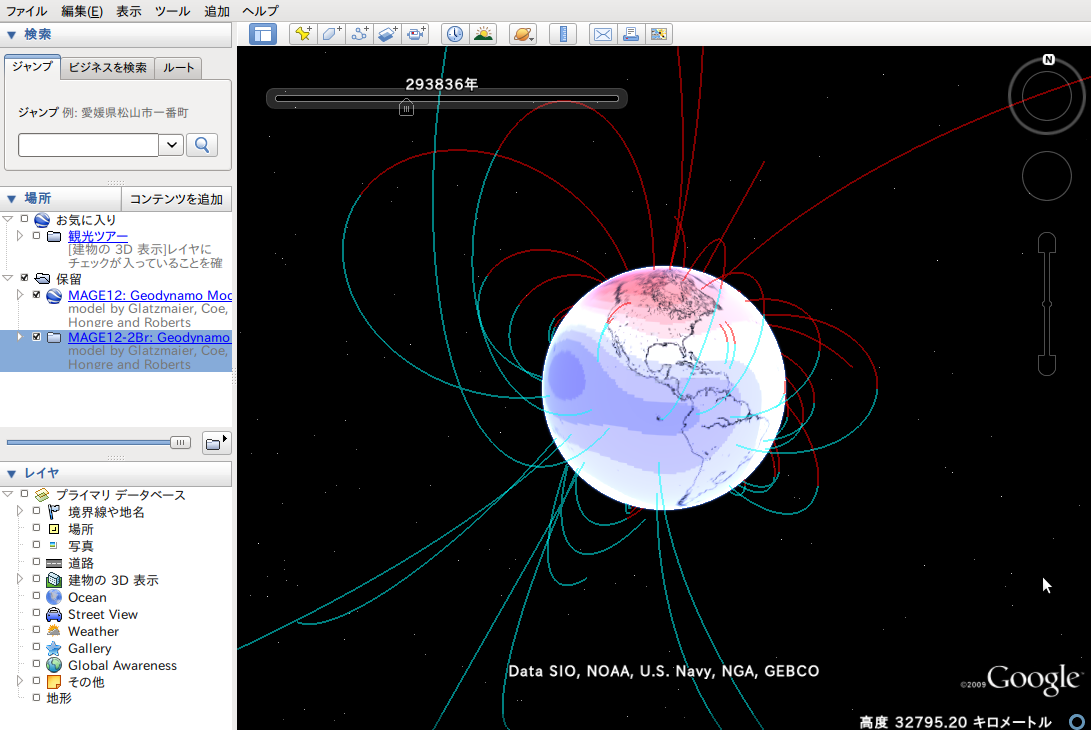Drastic geodynamo by Glatzmaier et al. (1999)
Here is the simulation result by Glatzmaier et al. (1999). The period of calculation corresponds to about 10 thousand years (from original 300 thousand years).
The main difference from Geodynamo model by Sakuraba and Roberts (2009) is that the field in this model rapidly changes. There are some reasons why this difference appears, and the most different setting between two models is the boundary conditions of calculations. Glatzmaier calculate geodynamo with giving condition of horizontally hetrogeneous heat flux on the core-mantle boundary. They thought this hetrogenuity is derived from the hetrogeneity of the setting of the lowermost mantle, which is shown by seismological evidences.
The result is that the magnetic field driven by dynamo processes becomes rapidly changing. Moreover the field has a tendency to get reversed under this condition. It is so difficult to compare this model to the geomagnetic field during real reversal, but this feature, representing reversals of the magnetic polarity, is one of a big goal of the simulation studies.
Screenshot: clickto zoom up: Magnetic field line and contour of radial componet (Br)

KML files: 10000 years with a reversal (reversed to normal polarity)
- Magnetic field lines: MAGE12-2MFL_GCHR99_20120310.kmz (5.0MB)
*modified for latest versions of Google Earth (2012/03/08) - Radial comp. Br[nT]: MAGE12-2Br_GCHR99_20101207.kmz (3.2MB)
- Inclination I[deg]: MAGE12-2Inc_GCHR99_20101207.kmz (3.9MB)
KML files: 40000 years with a reversal and a geomagnetic excursion(?)
(slightly heavy)
- Magnetic field lines: MAGE12-1MFL_GCHR99_20120308.kmz (13.2MB)
*modified for latest versions of Google Earth (2012/03/08) - Radial comp. Br[nT]: MAGE12-1Br_GCHR99_20101206.kmz (11.8MB)
- Inclination I[deg]: MAGE12-1Inc_GCHR99_20101206.kmz (15.3MB)
Reference:
Glatzmaier, G. A., R. S. Coe, L. Hongre and P. H. Roberts,
The role of the Earth’s mantle in controlling the frequency of geomagnetic reversals, Nature, 401, 885-890, 1999.
Steady geodynamo << Drastic geodynamo >> Paleomag with GE: Top